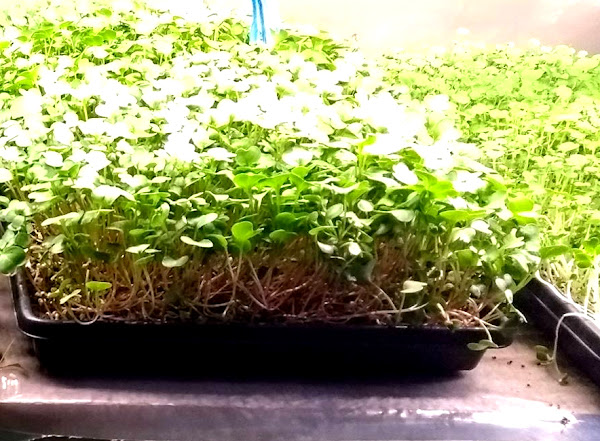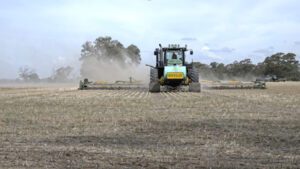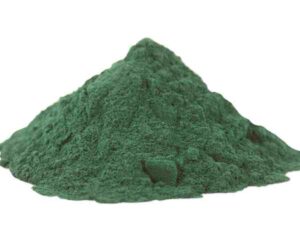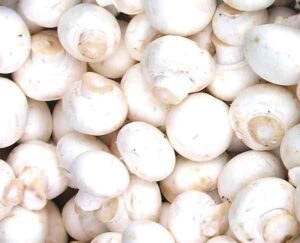Commercial microgreens farming is relatively a new business idea. It’s very easy to grow microgreens and at the same time it is highly profitable. And the good point is ‘everyone can start this business easily with little investment. Microgreens are actually vegetable greens which are harvested just after the cotyledon leaves have developed or possibly, with one set of true leaves (not to be confused with sprouts or shoots).
Microgreens are generally used as a nutrition supplement, a visual enhancement and also as a flavor and texture enhancement. They are often used in food and they add sweetness and spiciness to foods. Probably you are familiar with baby greens, but the microgreens are much smaller than these baby greens, because they are harvested very soon after sprouting, rather than after the plant has matured to produce multiple leaves.
Among upscale grocers, the microgreens are now considered a specialty genre of greens and they are good for garnishing salads, sandwiches, soups and plates. The microgreens can be used as a main vegetable as well in certain recipes for intense flavor and nutrition. Many recipes use them as a garnish while some utilize them as the main ingredient. For example, garlic pea shoots, pea shoots or micro cabbage in cabbage soup, or coleslaw made with radish microgreen instead of cabbage. [1]
Microgreens are becoming very popular day by day mainly for their intense flavor and nutrition. Innovative chefs and cooks create new ways to use them. Actually, edible microgreens or young greens are produce from various kinds of vegetables, herbs or other plants. They generally range in size from 1 to 3 inches including the stem and leaves.
The stem of the plant is cut just above the soil line during harvesting. Microgreens have fully developed cotyledon leaves and generally, one pair of very small, partially developed true leaves. However, microgreens are very nutritious and the demand is increasing. So starting commercial microgreens farming can be a good business idea for making good profits.
Microgreens Nutrition
As of early 2014, researchers at the USDA Agricultural Research Service have published several studies that identify the nutritional make-up and the shelf life of microgreens. 25 varieties were tested, key nutrients measured were vitamin C, E, K and beta-carotee plus other related carotenoids in the cotyledons. Among the 25 microgreens tested, cilantro, cabbage, garnet amaranth and green daikon radish had the highest concentration respectively of vitamin C, K, E and carotenoids. In general, microgreens contained considerably higher levels of vitamins and carotenoids (about 5 times greater) than their mature plant counterparts.

Health Benefits of Microgreens
Microgreens are highly nutritious and healthy. They are smaller in size but they pack a high nutritional punch. They often contain higher nutrient levels than more mature vegetable greens. Some microgreens have an intense aromatic flavor and concentrated nutrient content and come in a variety of colors and textures. Here we are trying to describe the top health benefits of consuming microgreens.
- Microgreens are very tasty and nutritious. They can be grown from various seeds and their taste and flavor vary depending on the variety.
- They are rich in nutrients and often contain larger amounts of antioxidants, vitamins and minerals than their more mature counterparts.
- Consuming microgreens is very good for heart health. They are rich source of polyphenols which helps to reduce heart related diseases.
- Animal studies show that microgreens may lower triglyceride and bad LDL cholesterol levels.
- As microgreens are great source of polyphenols, so they are very helpful for lowering the risk of Alzheimer’s disease.
- Antioxidants may help to reduce the type of stress that can prevent sugar from properly entering cells.
- In lab studies, fenugreek microgreens appeared to enhance cellular sugar uptake by 25-44 percent.
- The food rich in polyphenols may lower the risk of various types of cancers.
- Microgreens deliver a concentrated dose of nutrients and beneficial plant compounds. As a result, they may reduce the risk of certain diseases.
- Microgreens can be consumed in many different ways. They can be eaten raw, juiced or blended and can be incorporated into a variety of cold and warm dishes.
Advantages of Microgreens Farming Business
Commercial microgreens farming is relatively a new business idea. But demand of microgreens is increasing gradually. So, this can be a very good income source for some people. Starting commercial microgreens farming is relatively easy if you can complete a training before starting. Here we are tying to describe the top advantages of microgreens farming business.
- Starting microgreens farming is very easy and simple, even the beginners can start this business.
- Initial investment requirement in this business is relatively less. So, you can start this business if you have less money to invest.
- Microgreens grow very fast and you will start making money within a very short period of time.
- Commercial production of microgreens is very profitable, so it’s a great way for making money.
- As commercial microgreens production profitable, so it can also be a great employment source for the people, especially for the educated but unemployed people.
- Both demand and value of microgreens are very high in the market. So, profits in this business are also high.
- Less space requirement makes microgreens farming a better option when compared to traditional crop farming.
- Microgreens have very high demand and value in the market when compared to normal vegetable. And they are also demanded by high-end restaurants.
- Production costs in this business is less as compared to other crop production business.
- Consuming microgreens is highly beneficial for health. And you can enjoy fresh microgreens if you start your own production.
How to Start Microgreens Farming
Starting commercial microgreens farming is relatively easy and simple. It’s just like starting and operating other crop farming business. Research has shown that microgreens farming needs good observation and maintenance of external conditions for achieving good results. Soil, water, light and harvesting all should be finely tuned to have maximum output. Although, we recommend having practical experience from an expert or existing farmer in your area. Here we are describing more information about starting commercial microgreens farming business.
- Soil beds in microgreens farming are prepared by filling organic soil rich in nitrogenous content in the trays.
- Then the seeds are sprinkled on the top of the soil. Some seeds need to be soaked in the water for better germination.
- Paper towels or plastic covers are generally laid on top of the seeds. This cover keeps the environment warm for the seeds to germinate properly.
- Then water the seeds as required and place them in the nursery. Ensure enough light is available inside the nursery. Around 12 hours of light is required for good and fast germination.
- You can expect harvesting the microgreens when the seedlings grows to a height of 2 inches. Use a sharp knife to slice the base of the microgreens. Try to harvest carefully otherwise they wilt very quickly.
- You can use the leftover things in the tray after the harvest in a vermiculture bin.
Required Materials For Microgreens Farming
Here is the list of required materials for microgreens farming.
- Container
- Spray bottles
- High quality organic seeds
- Organic soil rich in nitrogen
- Paper towel or a chux cloth to cover the tray
- Plant lavels and markers to label the date and variety
Along with these materials, you will need additional things to be successful in microgreens farming. If you want to have a year-round production, then a greenhouse or hoop house (constructed with low cost or recycled materials) will be very good.
Heating System: Solar heating is always good, it is also good option for hoop houses during the spring. But you will need to provide warmth during the winter season for efficient plant growth. You can heat the growing area by using heat mats and biogas system with the help of water heaters.
Heat Mats: Electric heat mat is used during the winter season to heat the beds in the growing area without dissipating the entire heat to the hoop house.
Growing Area: An elevated table-like bed structure is generally used by the producers for microgreens farming, because it is much easier for seeding and harvesting than groundwork. A table which is accessible from all sides in chosen for this purpose and the width of the bed should be easily available from each side of the table.
Water Supply: Constant water supply is required for maintaining the moisture level of the soil in the growing area. Long hose pipes with spray nozzle necks are best suited for the purpose of microgreens farming.
Ventilation: You can use large fans for providing ventilation to the microgreens. Adequate ventilation is a must for preventing fungus in the winter and cooling in summer.
Processing: You will need a separate area for processing microgreens. Processing tasks include cleaning, sinking and drying.
Packaging: Micro-perforated food bags with a heat sealer is recommended to pack the microgreens. Doing this will ensure that they are prevented from tampering and can also breathe within to stay fresh and last longer.
Refrigeration: The microgreens have to be packed and refrigerated properly before they are delivered to the required location, otherwise they would wilt.
Popular Seeds Grown in Microgreens Farming
There is a long list of microgreens that can be grown, but most common varieties are basil, beets, broccoli, celery, chard, cabbage, parsley, cilantro, spinach, lettuce, kale, radish, chervil, arugula, peas, kholrabi, mustard, sorrel, amaranth etc.
Growing Microgreens at Home
There are 4 simple steps to be followed for growing microgreens at home garden.
- Soak the seeds in slight warm water overnight. This will help the seeds to germinate quickly.
- Lay a paper towel in the tray at the bottom and fill 3/4 of the tray with a moist growing medium with a depth of 3cm.
- Spread the seeds generously over the mix and press lightly. You can also sieved compost or vermiculture of about 0.5 cm thickness over the seeds. And water the seeds as needed.
- As the germination starts, the you can supply the plants with seaweed solutions for improving the nutrition content and flavor. You can start harvesting when the microgreens reach about 3 inches height.
Marketing
Marketing microgreens is pretty tough, because microgreens don’t have much demand in all areas. So, determine your marketing strategies before starting this business.
However, these are the common steps and ways for microgreens farming. Hope this guide has helped you! Good luck and may God bless you!







I read your post about microgreens, I am glad I got all necessary information from one site. I am looking forward to include this in my business on indoor and outdoor plants seller in Coimbatore